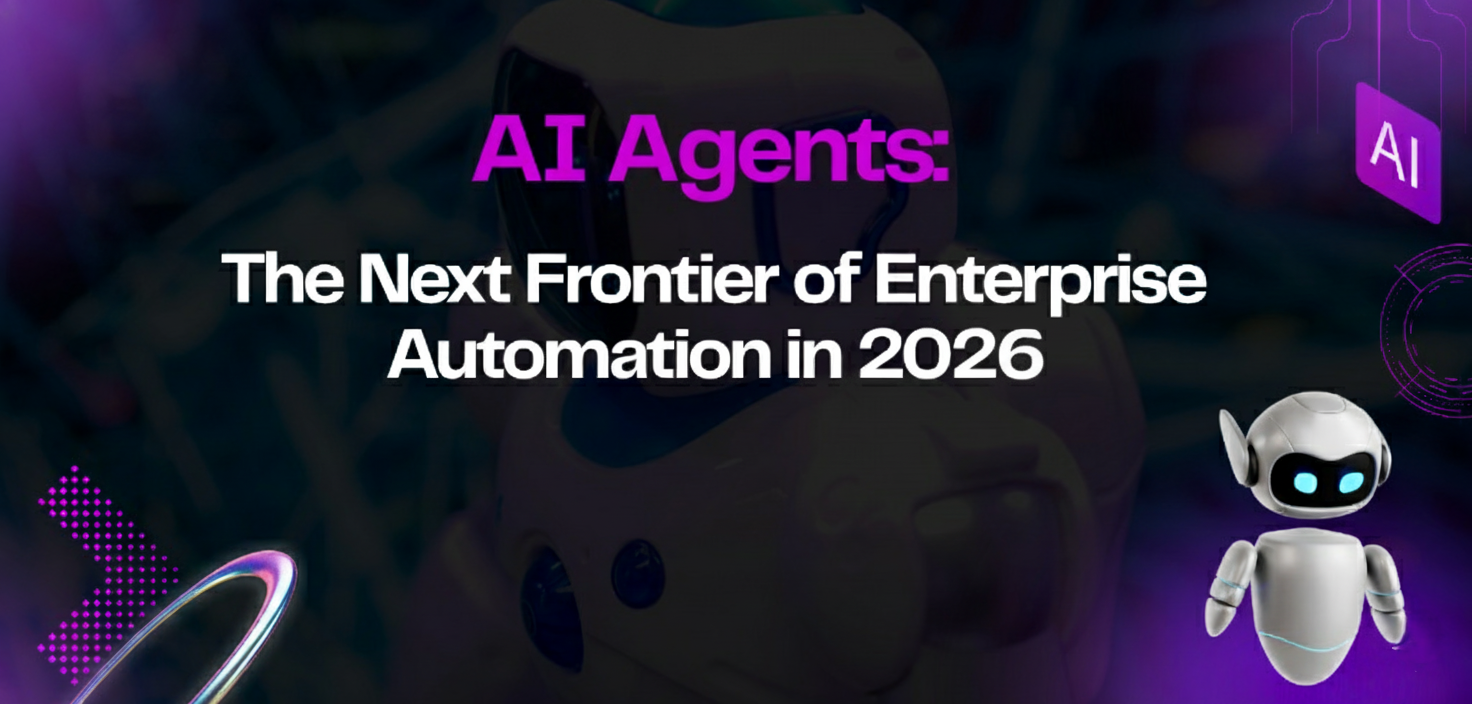The year 2025 saw Generative AI Copilots assisting employees in writing, coding, and analyzing data. But 2026 marks the rise of Autonomous AI Agents — systems that act, learn, and collaborate across enterprise workflows, performing real tasks rather than just responding to instructions. From automating marketing campaigns to monitoring IT operations, AI Agents are quickly becoming the backbone of productivity in modern enterprises.
What Are AI Agents?
AI agents refer to autonomous software programs that perform specific tasks independently without needing detailed instructions for each step. These agents possess the following capabilities:
- Large Language Models (LLMs): For reasoning and understanding context.
- APIs and System Integrations: For executing tasks across platforms.
- Memory Modules: Storing prior decisions to enhance later decisions.
- Reinforcement Learning: Created to improve achievments over time.
- Autonomous Execution: A step further than simple response generation, they perform tasks.
In short AI agents shift from conversational AI to process automation and execution.
Why Enterprises Are Adopting AI Agents
AI agents improve the speed and quality of decision making through the reduction of manual tasks. Over 40% of enterprises will have deployed some form of AI ecosystem by the end of 2025, according to Gartner.
Key Enterprise Use Cases:
- Sales & Marketing Automation: Qualifying leads, personalizing outreach, drafting campaign content.
- Customer Support: Resolving tickets, escalating complex issues, analyzing feedback trends.
- IT Operations: Monitoring systems, predicting failures, triggering automated responses.
- HR & Onboarding: Handling scheduling, training modules, and employee queries.
This represents a shift from human-assisted AI to AI-assisted humans.
AI Agent Ecosystems: Machine Collaboration
Specialized agents will evolve to function in unison:
- Collaboration-Planning Marketing AI works with Budgeting Finance AI.
- Logistics AI Predicts delivery times and schedules appropriately.
- Orchestration frameworks and outcome assimilation permit intelligent communication while maintaining turns in dialogue in automated systems.
As cross-functional human teams do, and with similar features but to a higher degree: with greater precision, speed, and operational 24/7 availability, intelligent systems can function.
Benefits: Decision Making, Scale, and Speed
Enterprise AI agents function on three assumptions to produce expected results:
- Operational Agility: Tasks that previously took just hours can now be done in a matter of minutes.
- Scalability: AI can perform tedious tasks and inactive processes at any time during the days and nights.
- Decision Intelligence: Elevated Predictive structures incorporate diverse and multi-layered repositories of data to assist executives in rationalizing higher decision-order.
An always-on and data-driven system facilitates tasks and augments the human operator potential.
Risks and Considerations
Baking in AI features to increase task operational speed will assist in the level of primary task, but it is the level of primary task and end results that should motivate, and for latent value tasks to be governed.
- Gate Control: Offering the system access to only specific pieces of data to perform in AI operational task governance.
- Control: To perform set goals while avoiding unintended rogue actions.
- Ethical Control: To avoid participation bias.
- Interoperability: Convincing the legacy system and its new equivalents to cooperate.
The need for positioned objectives will be governed by how tightly it should be automated.
Final Thoughts
In 2026, AI agents will represent the next phase of automation in organizations. These systems allow marketing, HR, and even IT functions to attain unprecedented speed, scalable operations, and enhanced strategic decision-making. Organizations that implement AI agents responsibly, with appropriate security measures, proper governance, and human supervision, will empower their employees and spearhead the transformation of the digital enterprise. Autonomous work is here.



I appreciate you sharing this blog post. Thanks Again. Cool.